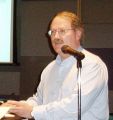Making Nature Count in the Town of Gibsons – celebrating and showcasing 5 years of leading by example

“Our eco-assets journey began in 2012,” stated Emanuel Machado. “The triggering event was the release of the Gibsons Aquifer Mapping Study. Shortly afterwards the Town changed the definition of infrastructure and formally acknowledged the need to understand and manage (eco)systems and not simply individual infrastructure assets. This action led directly to the Gibsons Eco-Asset Strategy.”










